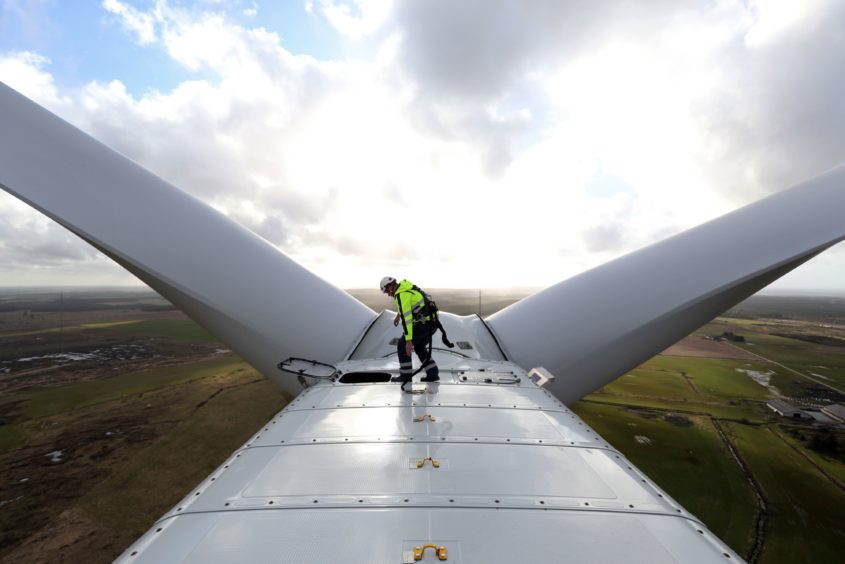
Sweden’s biggest wind farm began producing power this month, and the region’s nuclear reactors are feeling the heat.
Vasa Vind AB’s Askalen started commercial output on April 1, increasing supplies in a market already bloated by a massive surplus of water for power generation. A day later, two units at Vattenfall AB’s Forsmark nuclear plant north of Stockholm curbed output by about 50%. Two reactors at the utility’s Ringhals plant are halted because of low power prices.
While there’s no direct link between those events, it’s the latest sign of how renewable energy is crowding out traditional power sources across Europe. The 288-megawatt facility in northern Sweden will boost the nation’s wind output further, after a 50% jump in the first quarter from a year earlier because of a very breezy winter.
“This could mean more frequent periods with rock bottom power prices, forcing conventional generators off the grid, especially when windy conditions coincide with high hydro output,” said Oliver Metcalfe, lead analyst for onshore wind research at BloombergNEF in London.
The glut of electricity sent Nordic prices to their lowest ever in March. The slump is good news for everyone from miners and smelters to paper companies because electricity is a significant chunk of their costs. Although they’ve already sold much of the power they need in advance at higher prices, it will hurt earnings at power producers.
The benchmark day-ahead price averaged about 9 euros ($9.72) a megawatt-hour last month and traded at 4.41 euros for Wednesday. The region’s nuclear plants require a price of about 10 euros to 12 euros to break even, according to analysts.
Vattenfall continuously assess its operations and output in relation to the variable costs at its plants, said Henrik Svensson, a company spokesman.
“Right now, we’re in a period where availability of electricity is very good and prices in the market are extremely low,” he said.
While the lockdowns caused by the coronavirus are curbing electricity demand across Europe, the price slump in the Nordic market began long before that. A rarely seen jump in availability of water for hydro power coupled with the mildest winter anyone can remember sent prices plummeting.
Hydro power is a staple that has supplied the region’s industries with cheap power for more than a century and supplies vary from year to year. The glut is the widest for this time of year since at least 2011.
BNEF forecasts that global onshore wind capacity will gain 9% to more than 66 gigawatts this year, a forecast scaled back from the 24% expansion first anticipated.
That will help push out more traditional coal, gas and nuclear plants from the energy system. The German and U.K. coal power industries, among others, have already been decimated by a surge in green power.
Sweden will install more than 4.2 gigawatts of new onshore wind this year and next, according to BNEF. The Nordic region’s biggest economy will rely heavily on wind to replace old nuclear reactors in the future. The Askalen park has installed 80 Vestas A/S’s V136 turbines, which are as high as 112 meters.
For now, the region’s biggest reactor is operating at full capacity. Oskarshamn-3 is the only unit left at the site on Sweden’s east coast after two facilities were decommissioned in the past five years.
“This is a market where the prices are obvious evidence of an oversupply,” said Torbjorn Larsson, a spokesman for Oskarshamn operator Uniper SE. “In the long run, that’s worrying for all power producers, no matter the source.”
Recommended for you
